In the morning of January 28, 1986 solid-fuel boosters and RS-25 engines roared on the territory of the Kennedy Space Center. This sound marked the 25th launch of the Space Shuttle system. The reusable ship Challenger rose into the cloudless sky with a crew of seven astronauts on board.
Despite the generally routine nature of the mission, this flight was considered interesting for several reasons. First, one of its participants was schoolteacher Christa McAuliffe, who won the Teacher in Space competition (more than 11,000 people took part). She had a mission to conduct several televised lessons when the shuttle was in orbit. And secondly, the Challenger was launched only 16 days after the previous space shuttle. It was a new record. NASA has come close to such a desirable goal as launching shuttles into space at intervals of a couple of weeks.
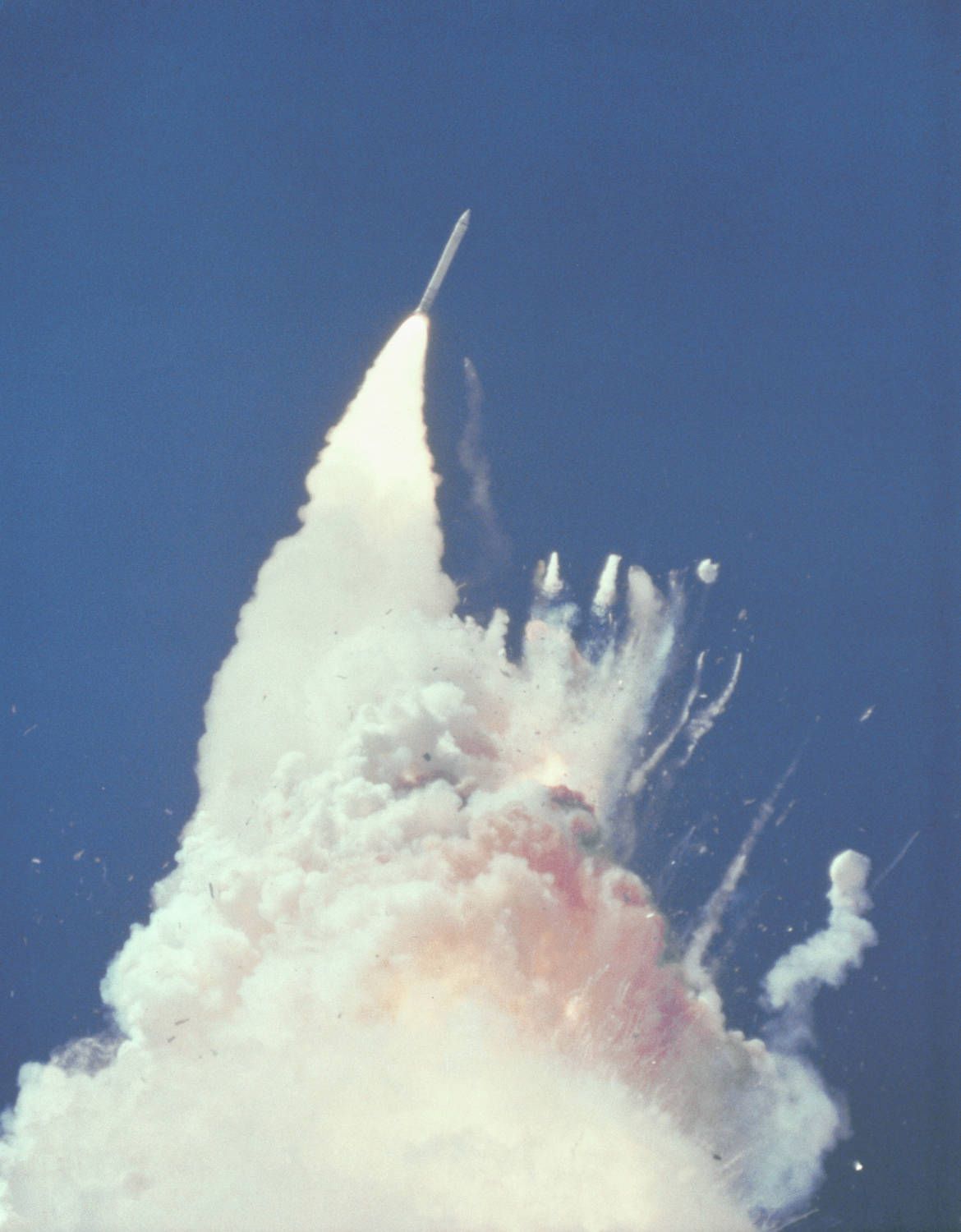
Unfortunately, all that was not the reason why the STS-51L mission went down in history. In the 73rd second of the flight, when Challenger was at an altitude of 15 km, it suddenly turned into a huge fireball. The launch was broadcast live, so all viewers learned about the tragedy immediately. The disaster had huge consequences for both the Space Shuttle program and all of American astronautics, forever dividing it into “before” and “after”.
Dizziness with success
Before moving on to the Challenger disaster and its aftermath, we need to discuss how the Space Shuttle program developed before 1986. This context is important for understanding the causes of the tragedy.
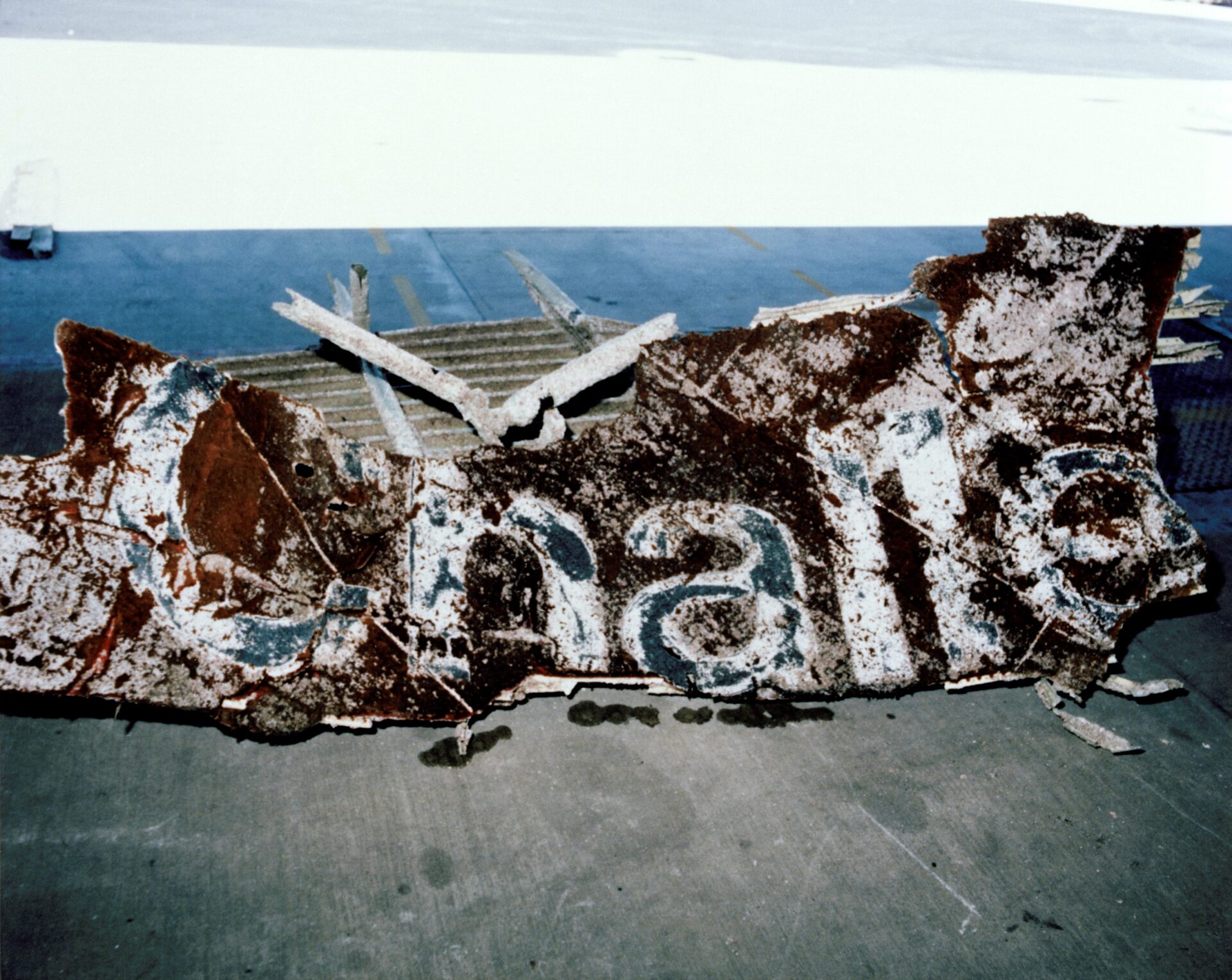
Winged spacecraft first went into space in 1981. Despite the compromising nature of the system, it has provided NASA with a number of truly unique capabilities. For example, shuttle crews could repair satellites directly in space or, if necessary, remove cargo from orbit and return it to Earth. Also, shuttle crews could be used as space installers — for the assembly of large structures (such as the Freedom orbital station). Even 35 years later, reports of some of the early missions of reusable ships, when astronauts went into outer space without insurance files to catch satellites, really look like episodes from science fiction movies. Such operations in space were not performed before or after.
The large capacity of the shuttles and the short nature of their flights also allowed NASA to include “passengers” in their crews — people whose skills, so to speak, was not critical for the success of the mission, but their stay in space was necessary for political reasons or to strengthen relations with foreign partners.
For example, in 1985, US Senator Jacob Garn went into orbit as part of the STS-51D mission. He demonstrated such an epically poor adaptation to weightlessness that NASA engineers later named a humorous figure in his honor that symbolizes disability in space. A year later another US senator came aboard the STS-61C mission as a “passenger” — Bill Nelson. The first astronaut of Germany and a Saudi prince also went to space by shuttle. All this gave the public the impression that traveling by shuttle is not much different from flying a plane, and almost any healthy person can safely fly into space after a little training.
Finally, we should not forget that the Space Shuttle was originally planned as a system that can pay off in the long run. In addition to scientific missions and flights for the Pentagon, shuttles were also used to launch various commercial cargoes into orbit. By the mid-1980s, NASA had a long list of private orders. It had been assumed that in the near future shuttles would be able to completely replace disposable spacecraft.
So it’s no surprise that NASA wanted to get the most out of the unique characteristics of reusable spacecraft. The Aerospace Administration has tried to increase the frequency of shuttle launches by putting new shuttles into operation and reducing their after-flight service. Statistics from the first five years of the program clearly demonstrate this trend.
- 1981 – 2 flights
- 1982 – 3 flights
- 1983 – 4 flights
- 1984 – 5 flights
- 1985 – 9 flights
1986 was to be a record year. NASA planned to launch at least 15 shuttles. But in the shadow of these successes lay the fundamental problems that ultimately led to the catastrophe. Reusable spacecraft have rightly been called the most complex machines in history. They consisted of thousands of different parts, and the failure of many of them could cause an accident. Even before the Challenger explosion in 1986, the shuttles had approached the dangerous line several times. For example, a hydrazine leak occurred in the engine compartment of the Columbia shuttle during the landing of STS-9 mission, causing a fire. If the fire had occurred a few minutes earlier, the ship would have lost control and crashed. The same fate could befall Discovery (STS-51D mission). During its landing, the chassis strut was seriously damaged, and as a result the spacecraft barely avoided flying off the runway. And during the STS-51F mission,one of three engines of the Challenger shuttle failed. If it happened 20 seconds earlier, the crew would have had to make an emergency transatlantic landing in Spain.
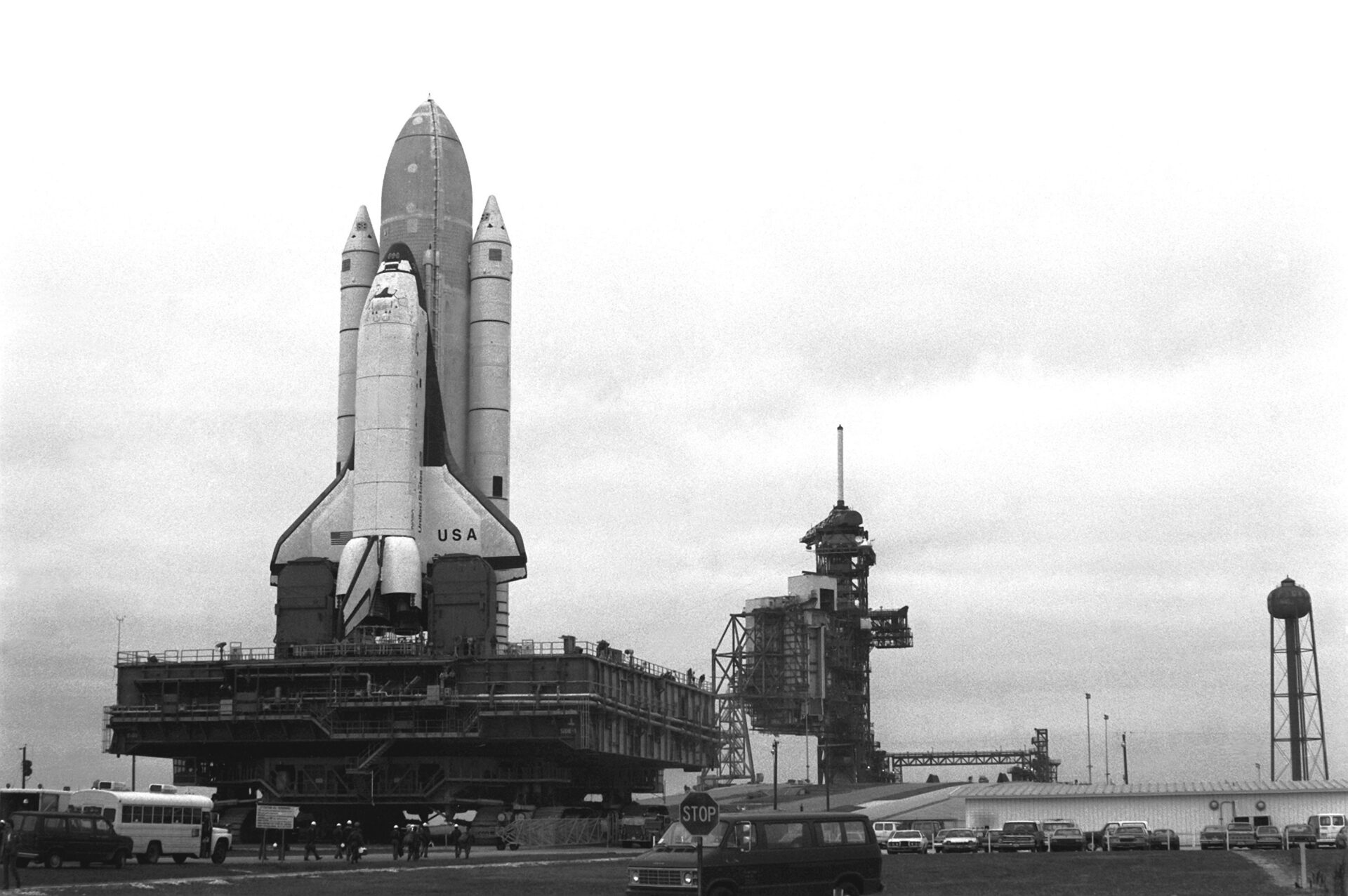
Together with the increase in the frequency of shuttle flights, the load on engineers working with cruise ships increased. According to eyewitnesses, by the end of 1985, the staff was too tired. Specialists had to work seven days a week to meet the deadlines. The lack of personnel and NASA’s desire to launch shuttles into space as often as possible led officials to turn a blind eye to the dangerous incidents that accompanied the flights of reusable craft. This was justified by the following logic: if in the end everything is fine — then the system has a sufficient security resource and there is no reason to worry.
The last fundamental problem was that the shuttles did not have any rescue system for astronauts in case of a critical accident. Yes, NASA has developed various emergency landing scenarios, but they could only be used if the spacecraft itself maintained structural integrity and controllability. In other cases, the crew was actually doomed.
All this made the catastrophe inevitable. As it became clear later, the question was not “if” but “when” it would happen. In the end, fate chose the STS-51L mission. Ironically, the cause of the tragedy were solid fuel boosters — perhaps the simplest components of the shuttle, which were believed to have simply nothing to break.
Why Challenger crashed
The Space Shuttle system was equipped with a pair of solid fuel boosters that provided the main part of the thrust, since the moment of separation from the launching pad and until reaching the altitude of 46 km. They had the most powerful rocket engines ever used in the history of astronautics. After the fuel burned out, the boosters were separated from the shuttle and parachuted into the ocean, then caught by special ships and reused.
Each booster consisted of four separate steel segments. Their joints were closed with sealing rings, which theoretically had to withstand the effects of hot gases and prevent their breakthrough. In fact, after the second flight of the shuttle (STS-2 mission), traces of thermal damage were found on one of the seals. This discovery came as a real shock to the engineers of Thiokol company, who built the boosters. However, instead of temporarily suspending flights and redesigning the structure, experts decided to run an experiment. They intentionally damaged the seal ring and exposed it to higher pressures than when the shuttle was launched. The test was passed. Therefore, NASA decided to continue operating the system. And the damage received during the STS-2 mission became a control sample with which all subsequent boosters were compared.
Subsequently, engineers repeatedly found traces of damage on the side boosters. But each time the degree of destruction was less than during the STS-2 mission. The shuttle flights continued because it was believed that everything was fine. This approach was later called “normalization of deviations”.
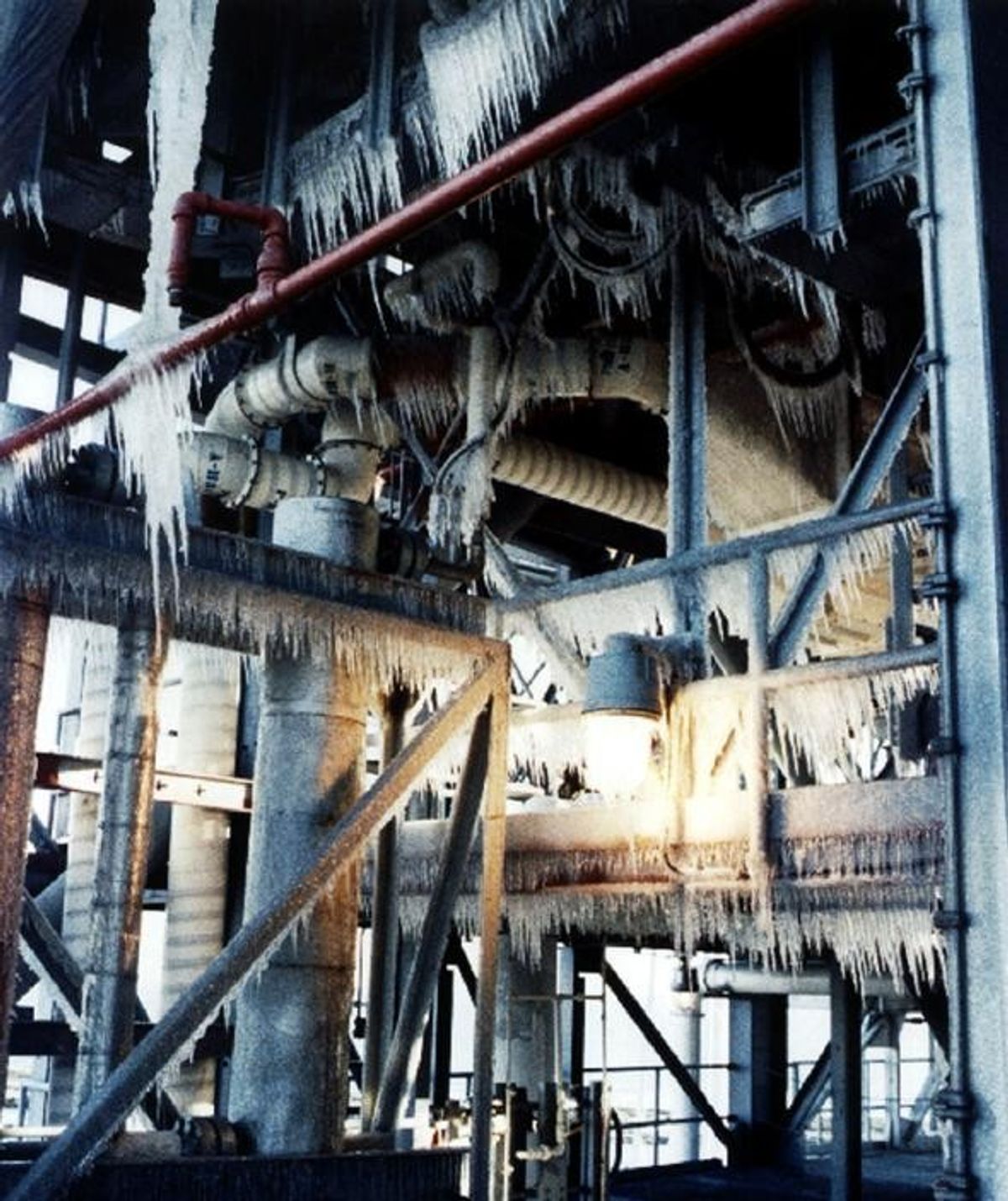
The night of January 27-28 was extremely cold for Florida. The temperature near Cape Canaveral dropped to -1 ° C. Some experts sounded the alarm. One of the previous launches, which took place after the shuttle stood on the launch pad on a cold night, revealed severe damage to the connection. It has been suggested that low temperatures have reduced the flexibility of the vulcanized sealing material, making it more fragile and vulnerable to loads. It is known that on the morning of January 28, several Thiokol engineers demanded the cancellation of the upcoming launch. But, not wanting to disrupt the planned flight schedule, NASA officials opposed it. As for the Challenger crew, they were not even aware of the problems with the boosters.
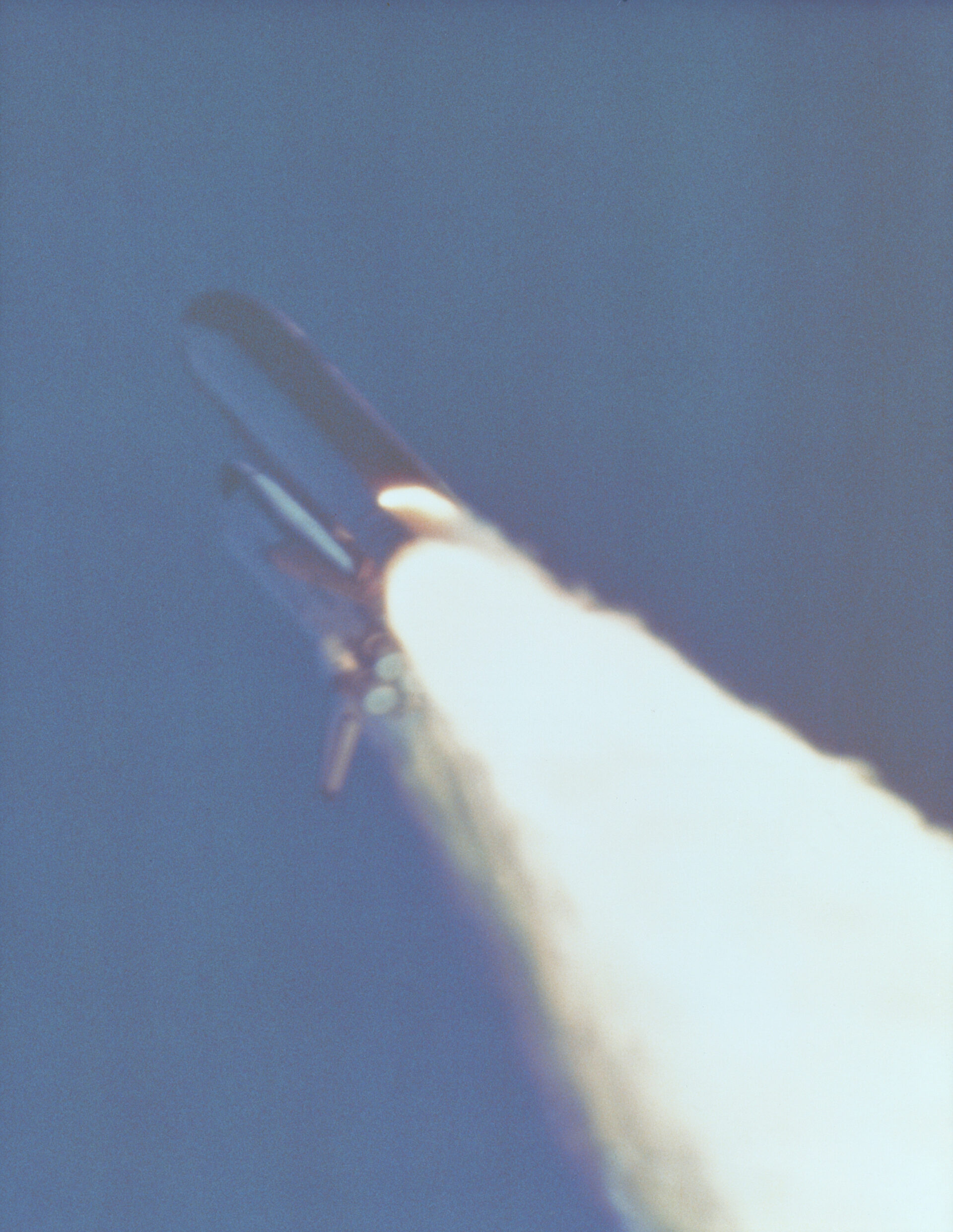
After the Challenger broke away from the starting table, the shuttle was doomed. Soon, a stream of hot gases burst through the ring, which lost its elasticity, and punched a hole in the central fuel tank (made of steel less than a millimeter thick with a 2.5-centimeter foam coating), and burned the connection with the booster. As a result, the latter simply came off and hit the fuel tank, which led to its instant destruction.
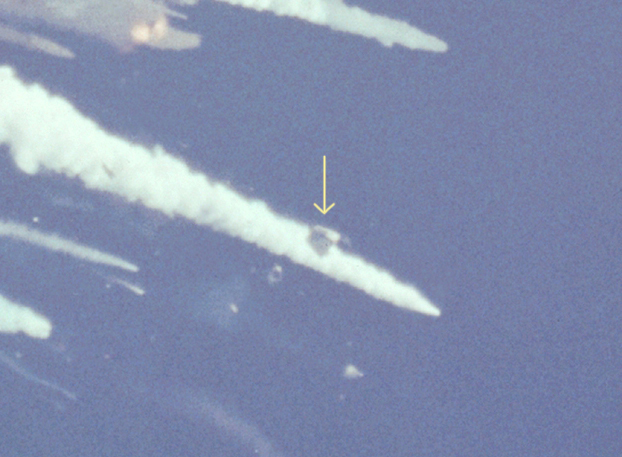
The worst thing was that the cabin with seven astronauts survived the destruction of the tank. It continued to fly on a ballistic trajectory, reached a height of 18 km and fell into the ocean. The investigation revealed that at least several crew members remained conscious after the crash. They activated personal air supply devices and switched some toggles in an attempt to restore power. But in this situation, the astronauts could do nothing. After two minutes of free fall, the cabin hit the surface of the Atlantic Ocean at a speed of almost 333 km / h and with an overload of more than 200 g. Everyone on board died instantly.
Direct and indirect consequences of the catastrophe
An independent commission was set up to investigate the Challenger crash, which included representatives from academia, the aerospace industry and the military, as well as astronaut Neil Armstrong and Nobel Laureate in Physics Richard Feynman. After a few months the commission issued a report alleging that the direct cause of the incident was the design failure of the solid fuel booster seal ring under the influence of hot gases.
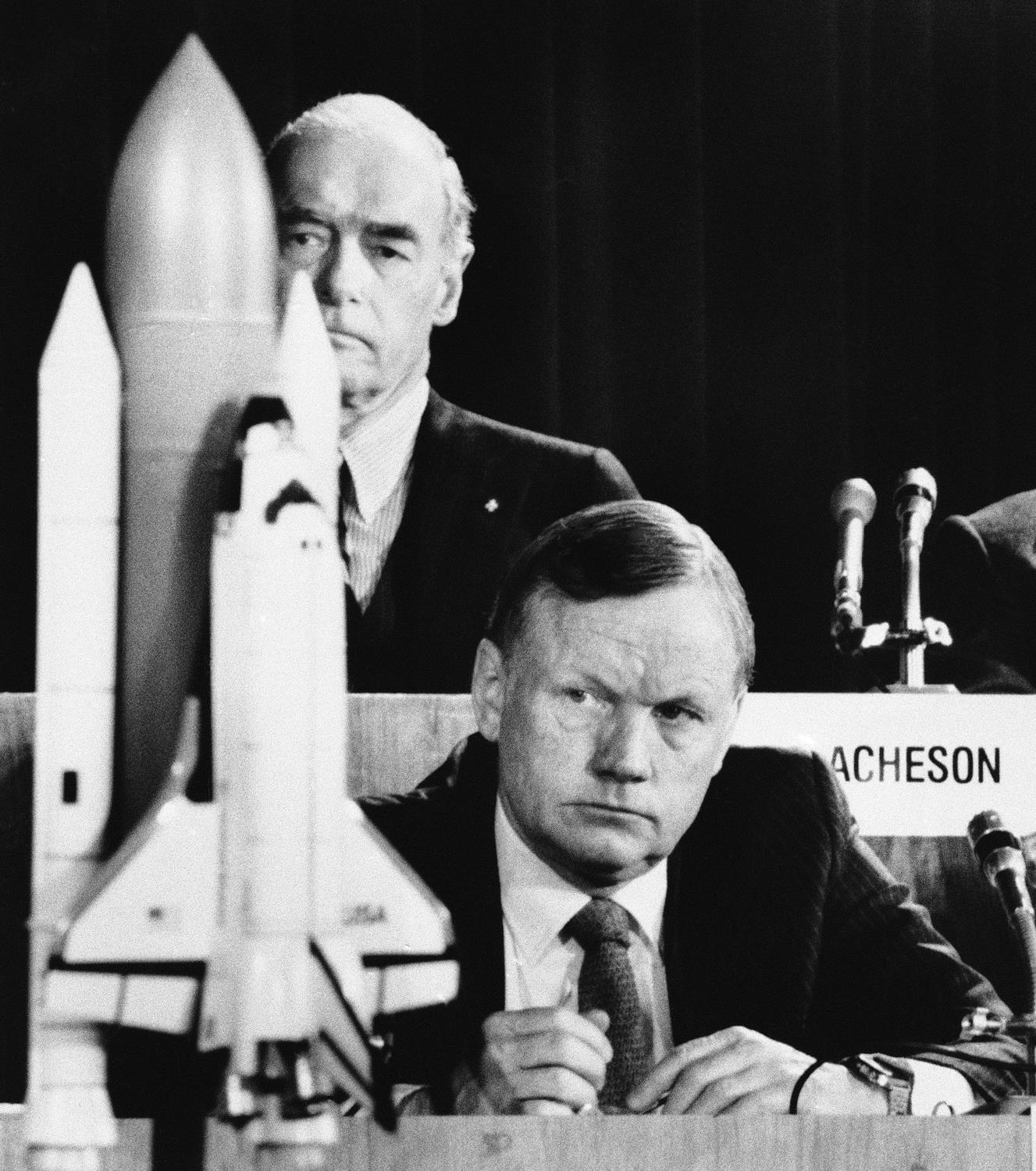
The commission also harshly criticized the decision-making culture within NASA and the practice of “normalizing deviations”, which, in fact, doomed Challenger. The investigation revealed many shortcomings in the design of the shuttle and numerous cases of omission of facts that could damage the public image of the aerospace administration. In his report on the catastrophe, Richard Feyman said: “For technology to succeed, reality must be higher than PR, because you can’t fool nature.”
The most obvious consequence of the catastrophe was the almost three-year break, when the shuttle fleet remained “chained” to Earth. Only after the engineers redesigned the solid propellant booster were the shuttles able to resume flights. The dead Challenger was replaced by a new ship Endeavor.

Despite the resumption of flights, the Space Shuttle program later only visually resembled the one in the first half of the 1980s. Due to the revision of safety standards, cruise ships have never flown with the same intensity. Nine launches in 1985 remained a record. An even more important consequence of the catastrophe was the decision to completely abandon the use of shuttles to launch commercial cargo. NASA’s management has had to forget about the self-sufficiency of the program and plans to replace disposable rockets with shuttles, as well as abandon the operation of spacecraft to move astronauts in space and missions, during which shuttles removed faulty satellites from orbit and returned them to Earth for repair. In addition, the voyages of “passengers” were almost completely stopped.
Few people remember it, but initially the shuttles were to be launched not only from Cape Canaveral, but also from the US Air Force base Vandenberg on the Pacific coast. Such missions were of interest to the military. The use of this base would allow to bring cargo to polar and solar-synchronous orbits.
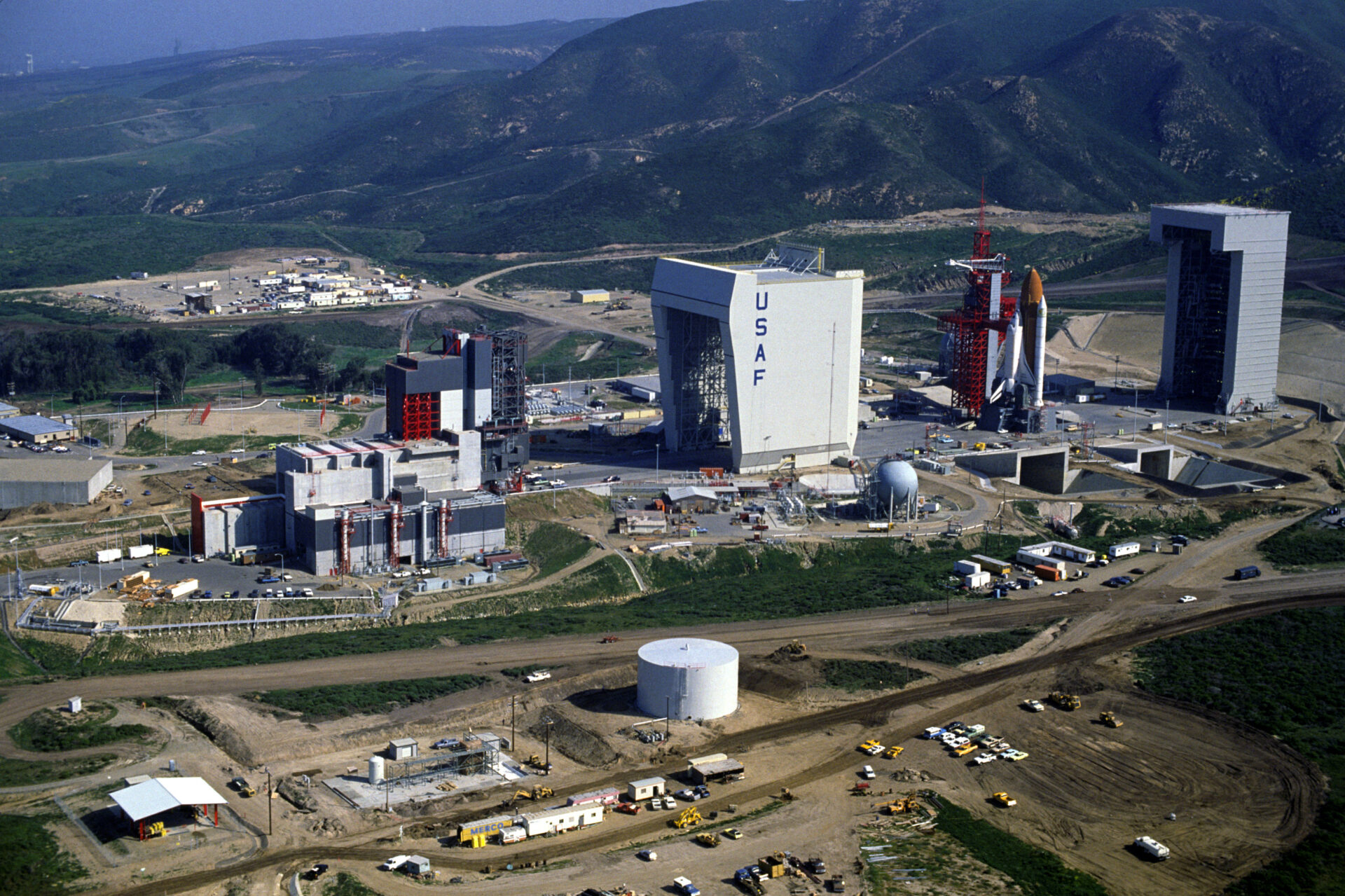
These plans were very close to implementation. For shuttle missions at the Vandenberg base, the SLC-6 launch complex was built and the runway was extended. After the successful completion of tests of the Enterprise atmospheric prototype, the first launch of a cruise ship from the west coast of the United States (mission STS-62-A) was scheduled for October 15, 1986. But the tragedy of Challenger forced the US Air Force to abandon plans to use shuttles. The USD 4 billion spent on Vandenberg’s re-equipment and preparations for polar orbit launches was wasted.
The crash of the Challenger indirectly led to another catastrophe. Due to the long break in the flights of reusable ships at the PEPCON plant, which produced fuel for solid fuel boosters, large reserves of unused ammonium perchlorate remained. On May 4, 1988, a fire broke out there, causing a series of detonations that virtually razed the entire plant to the ground. It is estimated that the total energy of the explosions was approximately one kilotonne in TNT equivalent. 372 people were killed and two injured, with nearly USD 100 million in damage.
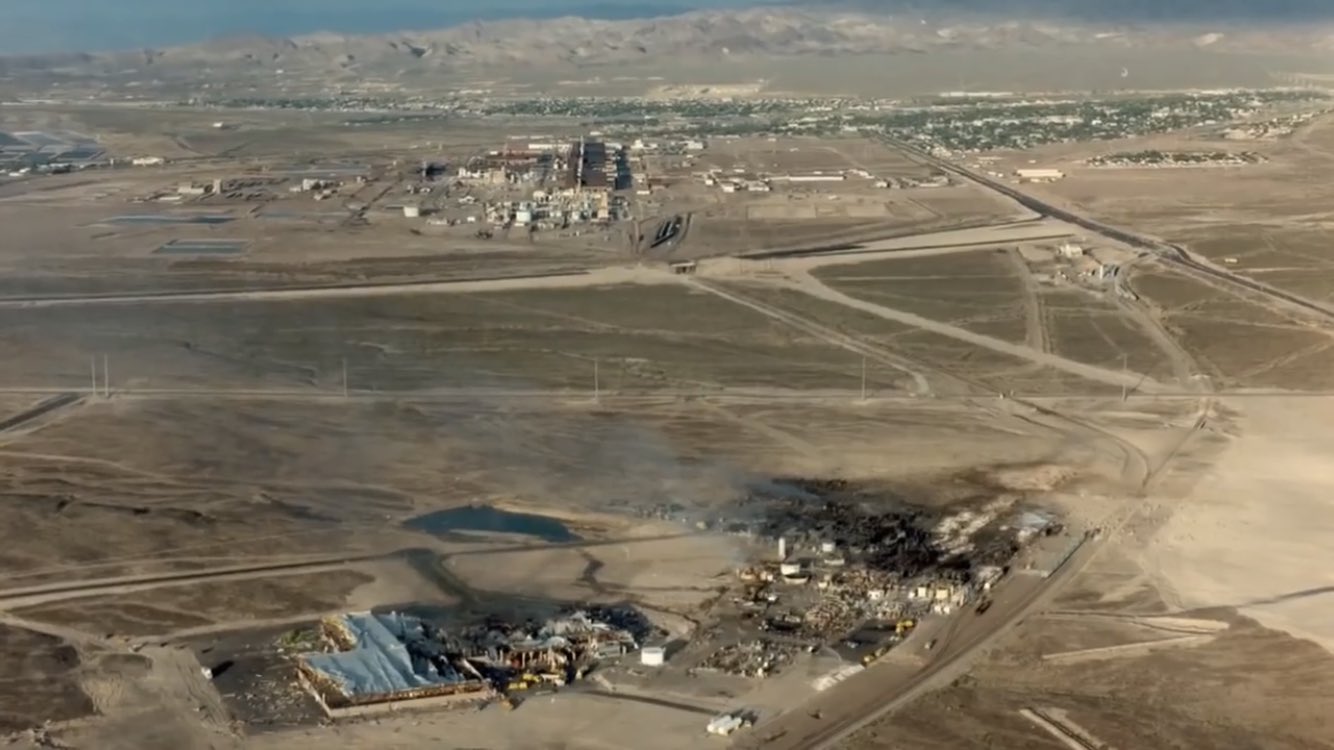
The scientific program was also hit hard. For example, the famous Hubble Space Telescope was originally scheduled to go into orbit in September 1986. For the period before the resumption of shuttle flights, the observatory was placed for long-term storage in a special room with an artificially cleaned atmosphere. Its month’s storage was worth $ 6 million. These expenses have significantly increased the overall cost of the project.
Due to stricter safety standards, NASA has decided not to take on board the shuttles powerful Centaur G booster units, which could allow research vehicles to fly to other planets in a straight line without gravitational maneuvers. This played an important role in the history of the Galileo and Ulysses missions, which were also originally scheduled to launch in 1986. Challenger made its adjustments — these interplanetary probes went into space only in 1989 and 1990, respectively. The Aerospace Administration had to equip the devices with less powerful upper-stage rockets. For the first of them, this circumstance almost became fatal.
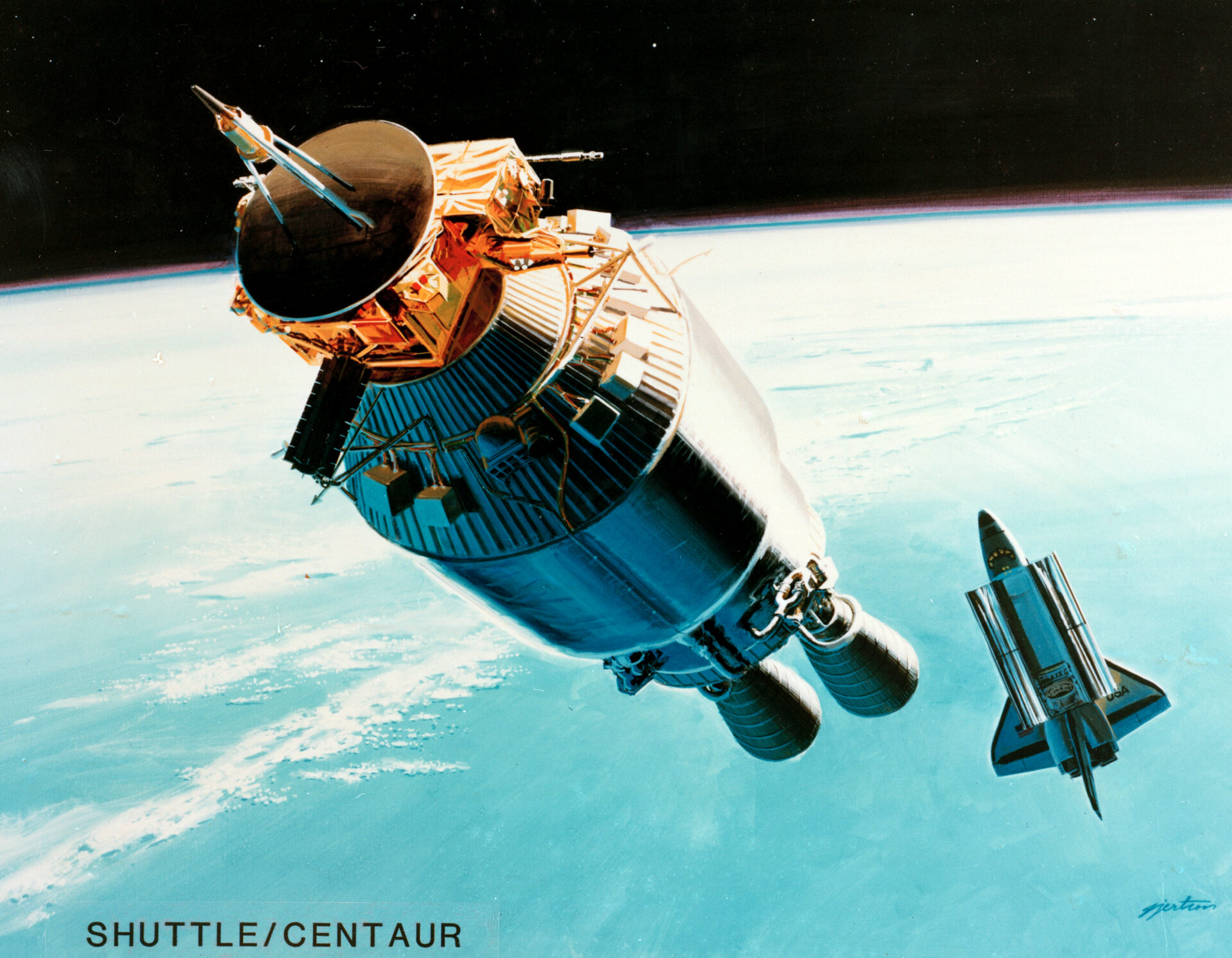
Engineers had to develop a new flight trajectory, which included a previously unforeseen gravitational maneuver near Venus. Since the main Galileo antenna was not designed for high temperatures, it was decided not to deploy it until the device was at a safe distance from the Sun, and in the early stages of the mission a low-power auxiliary antenna was used.
As a result, when the automatic reconnaissance began to deploy the main antenna, it simply jammed — it could not fully unfold. Throughout the mission the device had to maintain contact with the Earth through the auxiliary antenna, which negatively affected the efficiency of its work. Due to its low power, Galileo transmitted much less data than it could have done if its main antenna had remained operational.
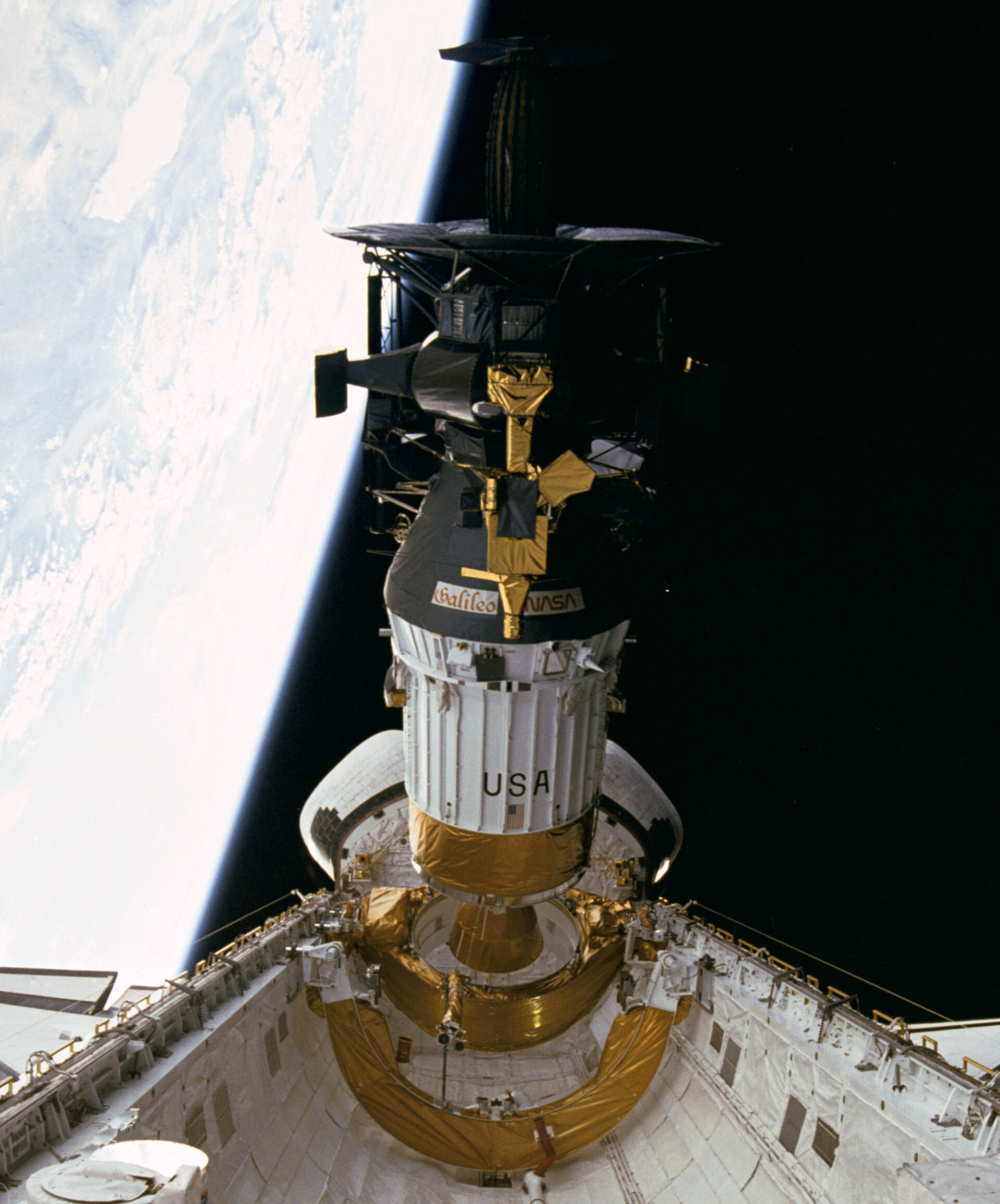
Of course, these are not all the consequences of the crash of the Challenger. But even from the above examples we can imagine its scale. The destruction of the ship triggered a real chain reaction, which in one way or another affected almost all aspects of the American space industry.
In conclusion we should say that although the engineers have redesigned solid fuel boosters to make them safer, there are too many vulnerabilities left in the design of the shuttles, damage to which could lead to irreparable consequences. And since the shuttles did not receive a full-fledged rescue system for the crew, any serious accident a priori remained fatal to astronauts. In addition, despite all efforts to improve the organizational structure and culture of decision-making at NASA, many rules have not been established. All this created the preconditions for the next catastrophe.
As soon as during the STS-27 mission in 1988, a fragment detached from the side booster hit the thermal protection of the Atlantis shuttle. The incident was recorded by ground cameras. After entering orbit, the crew deployed a manipulator with an onboard TV camera and inspected the impact site. The astronauts were very concerned about what they saw. Atlantis lost one heat shield tile and many others were damaged. But due to the low quality of the broadcast, experts on Earth could not see the defects and simply did not believe the words of the crew, deciding that they were misled by the play of light and shadow. Despite all attempts by the ship’s crew to explain the gravity of the situation, the Flight Control Center did not take any action.
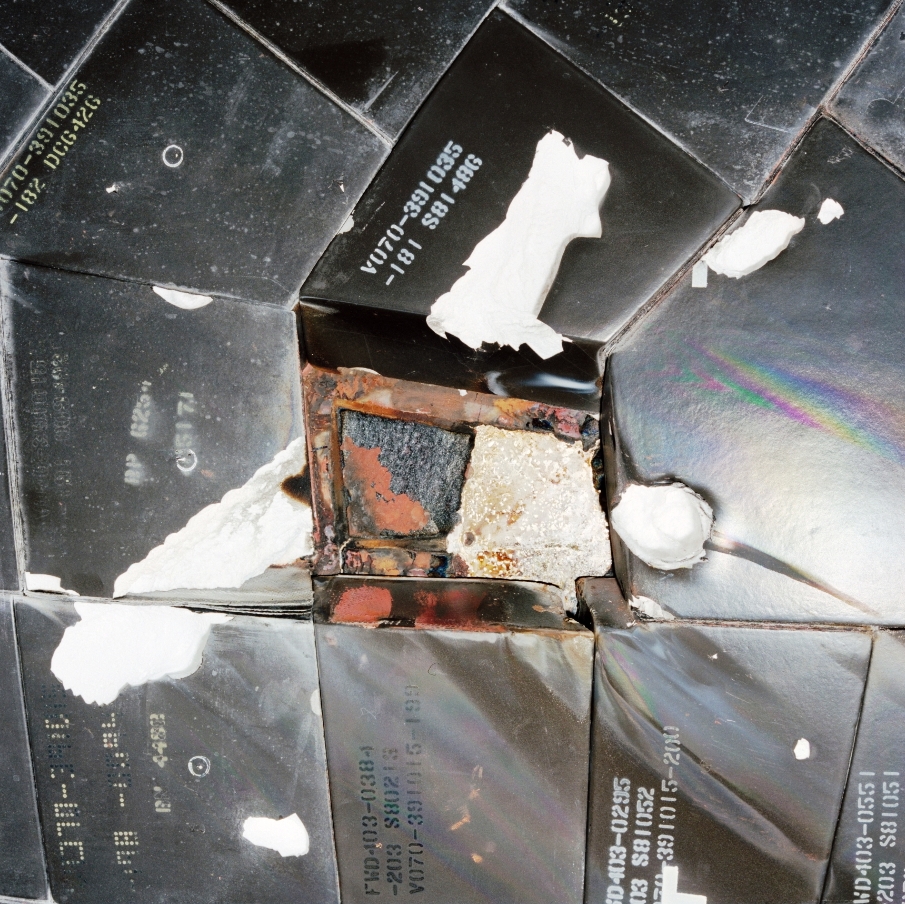
In the end, Atlantis made a successful landing. But according to the results of the inspection, the service staff counted a total of more than 700 damaged tiles, which stretched half the length of the shuttle. It was saved by the fact that in place of the broken tile was an additional aluminum plate that covered one of the antennas. In fact, the damage had occurred almost in the only possible place where it would not have led to the death of the ship. Hitting any other point on the shuttle would have destroyed it as it had entered the atmosphere.
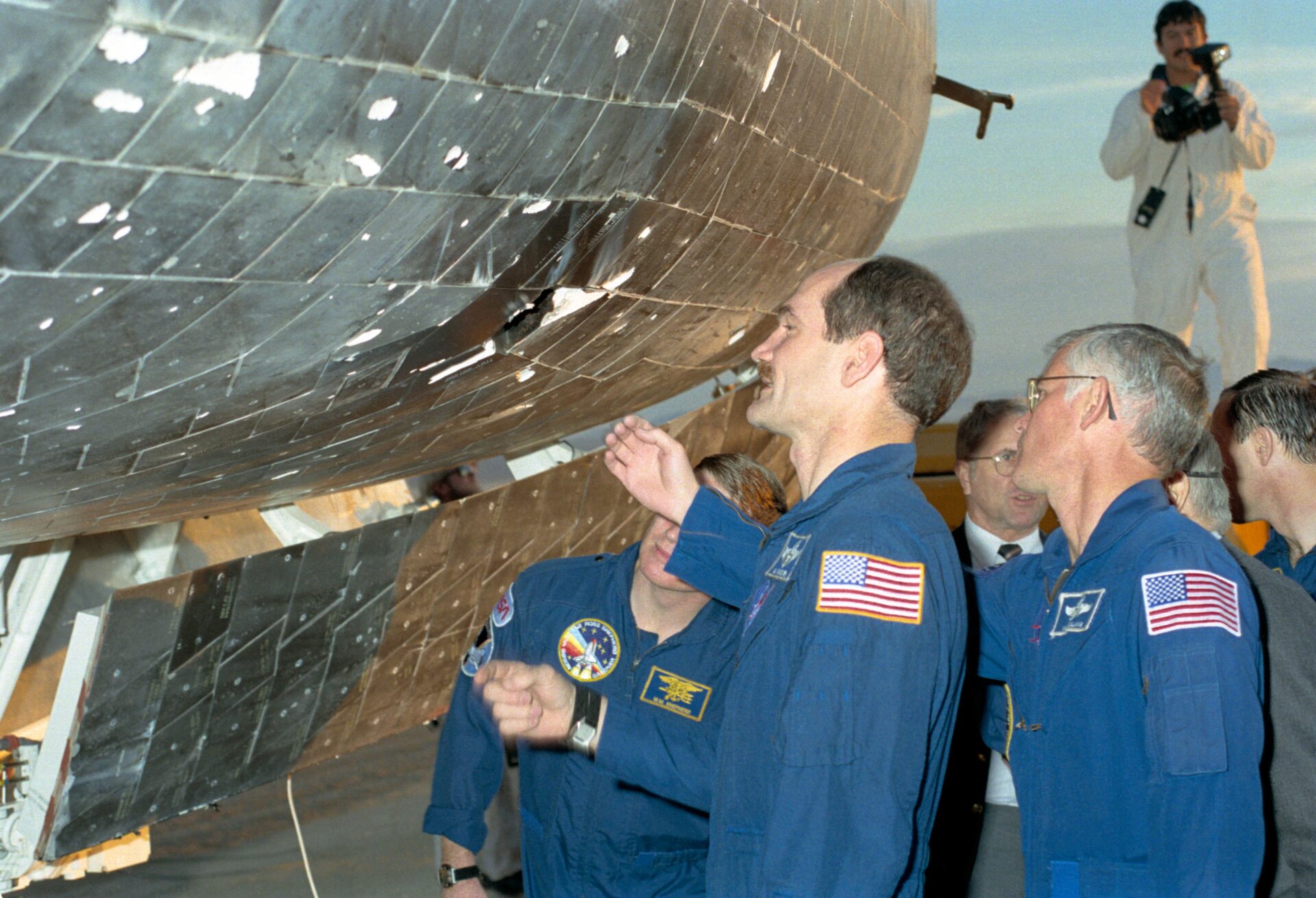
The STS-27 crew was very lucky. After the flight, engineers made another change in the design of the side booster. But NASA has not made any long-term conclusions from what happened, and has not worked out control procedures in case of a recurrence of this situation.
On January 16, 2003, during the launch of the Columbia shuttle, a piece of thermal insulation came off the fuel tank and struck the left wing of the shuttle. After studying the video of the launch, the engineers paid attention to this event. But during further analysis, NASA’s management decided that the incident did not pose any danger to the mission. Despite requests from some technicians, the aerospace administration refused to support the Pentagon’s request to photograph the spacecraft using one of its reconnaissance satellites.

On January 23, the crew commander and co-pilot of the shuttle received an e-mail from the flight director stating: “The experts studied the high-speed survey and concluded that they had no concerns about possible damage to the thermal protection. We have already seen similar incidents during some other missions, so we have no reason to worry about entering the atmosphere”. Eight days later, Columbia collapsed on its return to Earth. The disaster claimed the lives of seven astronauts.

